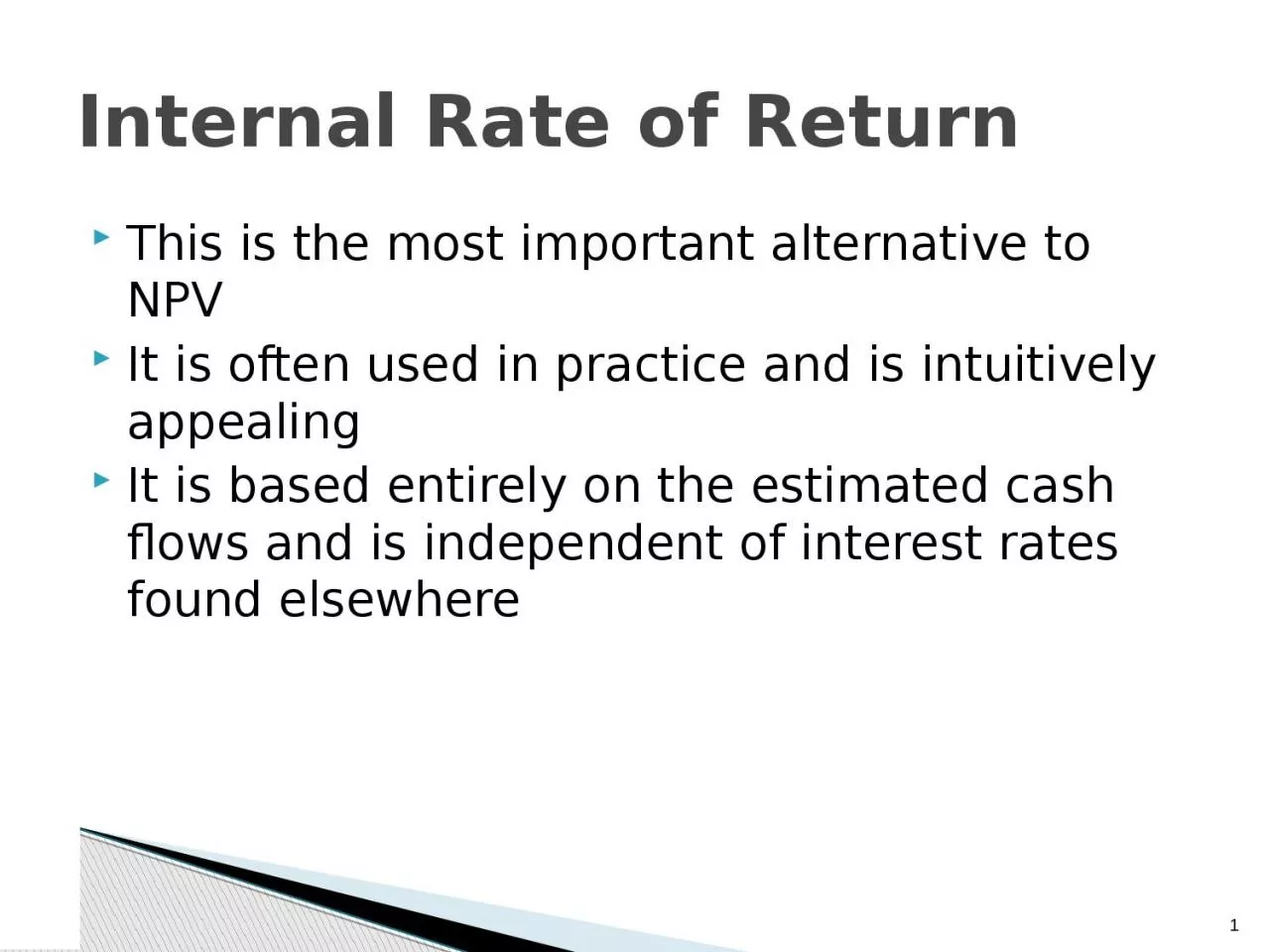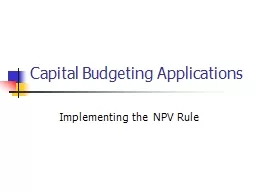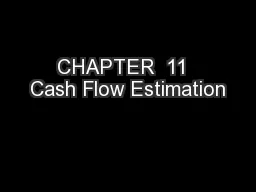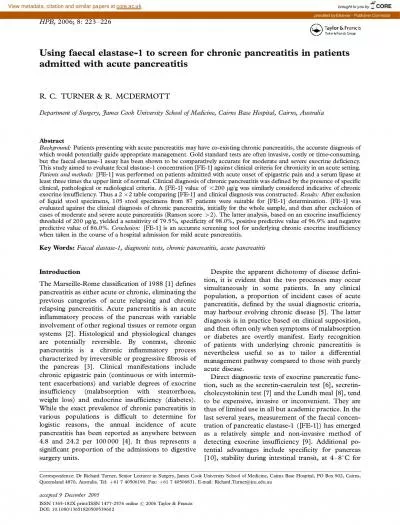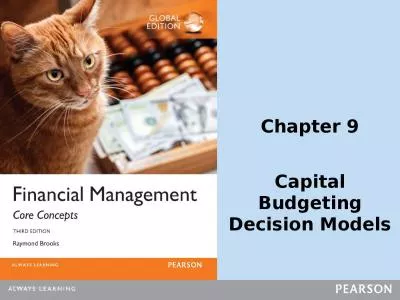PPT-This is the most important alternative to NPV
Author : mackenzie | Published Date : 2023-11-06
It is often used in practice and is intuitively appealing It is based entirely on the estimated cash flows and is independent of interest rates found elsewhere 0
Presentation Embed Code
Download Presentation
Download Presentation The PPT/PDF document "This is the most important alternative t..." is the property of its rightful owner. Permission is granted to download and print the materials on this website for personal, non-commercial use only, and to display it on your personal computer provided you do not modify the materials and that you retain all copyright notices contained in the materials. By downloading content from our website, you accept the terms of this agreement.
This is the most important alternative to NPV: Transcript
Download Rules Of Document
"This is the most important alternative to NPV"The content belongs to its owner. You may download and print it for personal use, without modification, and keep all copyright notices. By downloading, you agree to these terms.
Related Documents

